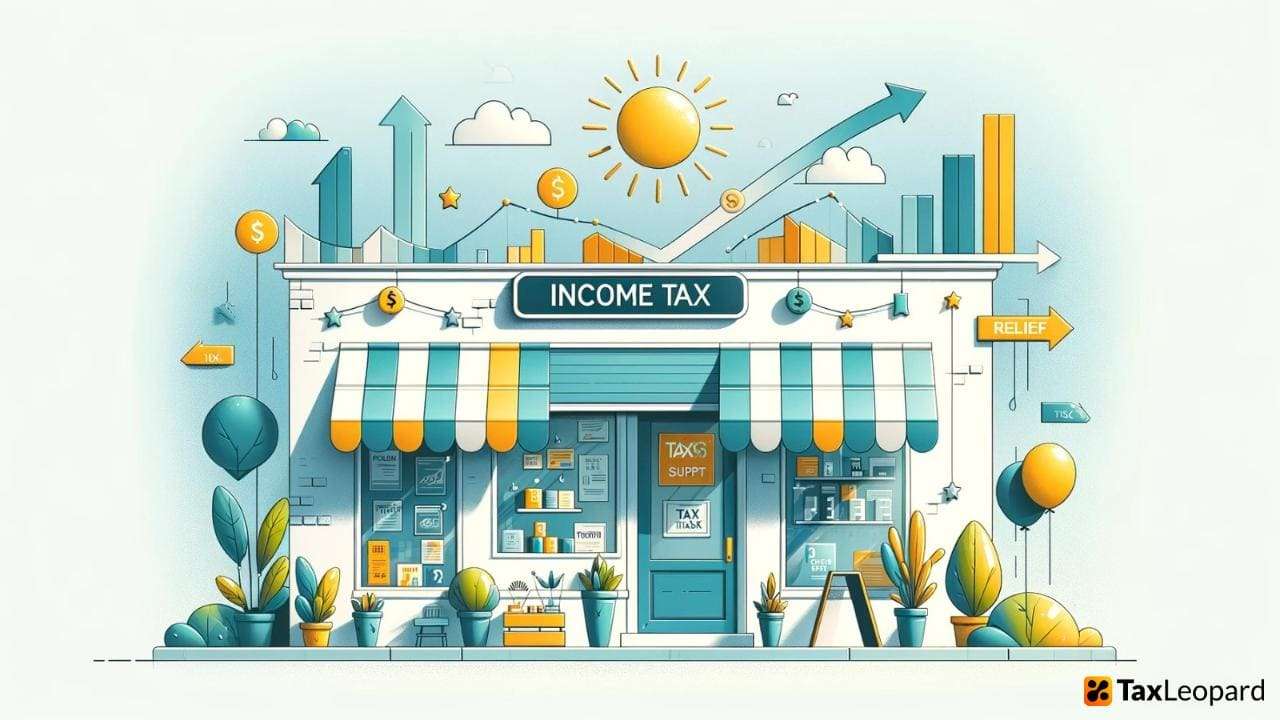The taxes can often feel like navigating a labyrinth for small business owners and sole traders. With the complexities of tax regulations and the ever-present goal of maximizing profitability, it’s no surprise that many find themselves overwhelmed. Research indicates that a significant number of small businesses struggle to fully utilize available tax benefits, leaving valuable savings on the table. However, there’s a solution at hand: the small business income tax offset.
This guide delves into how sole traders and partners in unincorporated businesses can leverage the unincorporated small business tax discount to reduce their taxable income. From understanding eligibility criteria to calculating the offset using the small business income tax offset calculator, this article provides a comprehensive overview to ensure you’re not missing out on this pivotal tax advantage.
What is the Small Business Income Tax Offset?
The Small Business Income Tax Offset offers a discount on tax payable for eligible small businesses. Specifically designed for Australian small business owners, including sole traders, this offset reduces the tax liability based on the net small business income. The Australian Taxation Office (ATO) applies the offset directly to the tax payable on the business income, making it a valuable deduction for business owners.
Importance for Small Businesses and Sole Traders
- Reduces overall tax payable: Vital for improving cash flow.
- Encourages entrepreneurship: Supports the growth of the Australian small business sector.
- Facilitates re-investment: Extra savings can be reinvested back into the business.
- Simplifies tax planning: Offers a straightforward way to lower taxable income.
Who is Eligible for the Small Business Tax Offset?
Eligibility centres around having an aggregated turnover of less than a specific threshold set by the ATO. This includes sole traders, partners in a partnership, or individuals with a share of net small business income from a trust. The offset aims to support unincorporated small businesses, ensuring they benefit from reduced tax obligations.
Requirements for Sole Traders and Small Businesses
- Declare all business income: From both Australian and international sources.
- Calculate total net small business income: Ensuring accurate reporting of profits and losses.
- Meet the ATO’s turnover criteria: Aggregated turnover must be below the specified limit.
- Comply with tax return filings: Timely submission of annual tax returns is essential.
How is the Tax Offset Calculated?
The tax offset is calculated as a percentage of the income tax payable on your business income. This percentage is set by legislation and has changed over the years, reflecting the Australian government’s commitment to supporting small businesses. For example, if the offset rate is 16%, and the tax payable on your business income is $1,000, the offset amount would be $160. This amount is then deducted from your total tax bill, reducing the amount of tax you owe.
Factors Affecting the Calculation
- Net Business Income: Your offset is directly related to the net income your business generates. Higher income may lead to a greater offset, but there are caps.
- Business Structure: Sole traders and individuals in partnerships are eligible, affecting how offsets are applied.
- Income Cap: There’s a maximum amount of income for which the offset can be claimed, impacting the calculation.
- Taxable Income: The total taxable income, including business and other incomes, determines the proportion of the offset.
- Losses: Business losses can affect the calculation, as they reduce your net business income.
- Assessable Income: Only assessable income from carrying on a small business counts towards the offset.
- Rate of Offset: The government-set rate of the offset influences the final amount you can deduct from your tax bill.
Understanding these factors can help small business owners and sole traders maximize offset benefits through tax planning.
Current Rate of Small Business Income Tax Offset
The current rate of the small business income tax offset is 16%. Eligible small businesses can reduce their net income tax up to a certain amount with this rate. Sole traders and small business owners who are Australian residents for tax purposes can calculate their offset amount based on a percentage of their taxable income that comes from running a small business. This tax offset helps small businesses minimize their income tax liability by reducing the overall tax burden.
Previous Rates and Changes
In recent years, the Australian government introduced changes to the small business income tax offset, reflecting its commitment to supporting the small business sector. Initially, the offset rate was lower but has been progressively increased to encourage small business growth and investment. Since its inception, the rate has been raised to reduce small business taxable income and provide tax relief. These rate changes are part of tax reforms to lower small businesses’ tax bills and keep them competitive.
Planning for Maximum Benefit
- Accurately lodge your tax return, including all assessable income from your small business activities.
- Understand that the tax offset is calculated as a percentage of your taxable income, which can help reduce your overall taxable amount.
- Report your total net business income accurately, as the offset amount is based on this figure.
- Ensure eligibility by meeting all requirements set forth by the Australian Taxation Office (ATO), including turnover thresholds.
- Utilize all eligible income amounts in your calculation to maximize the potential benefits of the tax offset.
- Regularly review tax laws and ATO guidelines to stay informed of any changes that could affect your tax offset eligibility or amount.
Common Mistakes to Avoid
- Failing to understand how your basic income tax liability interacts with the small business tax offset.
- Assuming the offset can result in a refund; it can only reduce the tax payable to zero.
- Overlooking eligibility criteria, like the necessity of being an Australian resident for tax purposes and actively carrying on a business.
- Incorrectly calculating the offset amount, can lead to not maximizing your potential tax savings.
- Mismatching the income year of your tax return with the period for which you claim the offset.
- Mixing personal and business finances leads to confusion and potential errors in determining your offset eligibility.
Tips for Sole Traders to Increase Their Offset
Sole traders and partnership income earners should use these strategies to enhance their small business income tax offset:
- Accurately Report All Business Income: Ensure you accurately declare all business income, including assessable sole trader or partnership income. This comprehensive reporting includes income from both domestic and international sources.
- Maximize Deductible Expenses: By increasing deductible expenses, sole traders can lower their taxable income. This reduction boosts the proportion of tax payable that’s eligible for the offset, thereby enhancing the benefits of the unincorporated small business tax discount.
- Utilize Losses Wisely: If your sole trader or partnership business income results in a loss, strategically use that loss to offset other taxable income. This approach can influence the offset amount you’re entitled to, making use of the unincorporated small business tax discount more effectively.
- Stay Informed on Tax Changes: The tax discount for unincorporated small businesses has seen adjustments. Keeping abreast of these changes ensures you leverage the maximum potential of your tax offset.
- Lodge Your Tax Return Accurately: Utilize the small business income tax offset calculator to accurately work out your offset based on the current income year. This tool takes into account the proportion of tax payable from your business activities.
- Ensure Eligibility: Meet Australian tax residency requirements and operate as a sole trader or partnership to qualify for the offset.
- Calculate Your Offset Carefully: The offset, based on information from your taxable business income, is calculated as a percentage. The business income tax offset calculator can aid in determining the exact proportion of your tax payable that’s offset, adhering to the cap limits.
Incorporating these strategies can substantially aid sole traders in reducing their tax liability through the small business income tax offset, making full use of the unincorporated small business tax discount.
Conclusion
The small business income tax offset presents a valuable opportunity for sole traders and small businesses to significantly reduce their tax burden. By applying the strategies and insights provided in this guide, you can navigate the complexities of the unincorporated small business tax discount with confidence. Remember, every dollar saved in taxes is a dollar that can be reinvested into growing your business. Have you calculated your potential savings using the small business income tax offset calculator yet? What are your plans for the savings?
FAQs
1. How do I qualify for the small business income tax offset?
To qualify, your business must be unincorporated, have an aggregated turnover of less than the current threshold, and you must be an Australian resident for tax purposes.
2. What is the current percentage rate for the small business tax offset?
The Australian government sets the offset at a fixed percentage of the income tax payable on the business income, and this rate can change.
3. Can sole traders benefit from the small business tax offset?
Yes, sole traders operating a business in Australia can benefit from the offset, provided they meet the eligibility criteria.
4. How is the small business tax offset calculated?
The calculation of the offset uses a percentage of your net small business income to reduce your basic income tax liability, subject to a maximum cap.
5. Is there a limit to the income tax offset??
Yes, there is a cap on the amount of offset you can receive, based on your total net small business income and the applicable offset rate.




